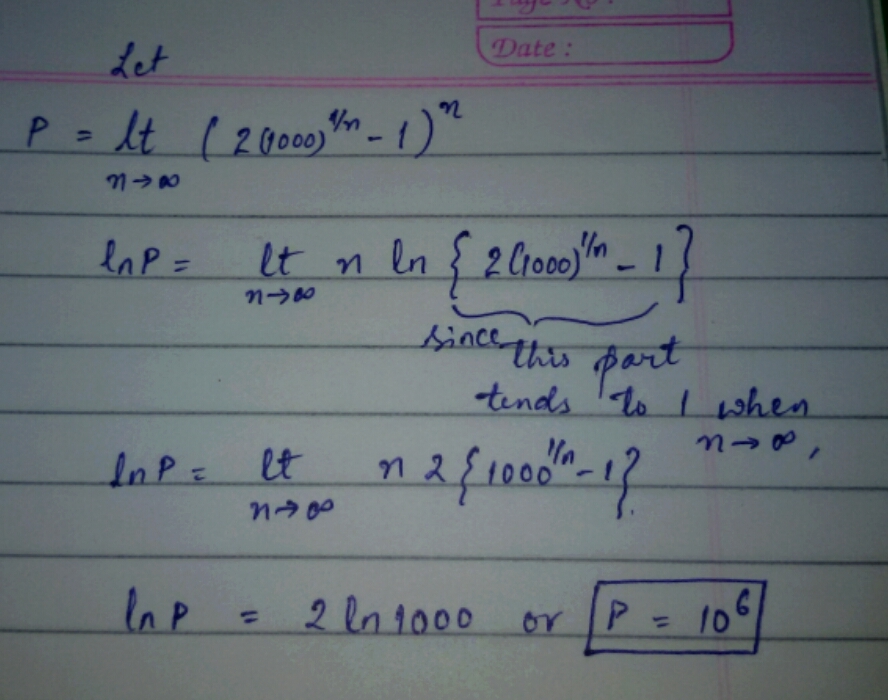This section requires Javascript.
You are seeing this because something didn't load right. We suggest you, (a) try
refreshing the page, (b) enabling javascript if it is disabled on your browser and,
finally, (c)
loading the
non-javascript version of this page
. We're sorry about the hassle.
2 solutions
could you please explain and show the differentiation steps? I am somewhat confused as to how it was done.
Log in to reply
Note that d x d ( p x ) = p x ln p
I have added an explanation as note.
this makes sense until right after the part where you show the term that tends to 1 as n approaches infinity. what did you do after that? where did the natural log go? how did you factor a 2 out?

Relevant wiki: L'Hôpital's Rule
L = n → ∞ lim ( 2 n 1 0 0 0 − 1 ) n = n → ∞ lim ( 2 × 1 0 n 3 − 1 ) n = n → ∞ lim exp ( ln ( 2 × 1 0 n 3 − 1 ) n ) = exp ( n → ∞ lim n ln ( 2 × 1 0 n 3 − 1 ) ) = exp ( x → 0 lim x ln ( 2 × 1 0 3 x − 1 ) ) = exp ( x → 0 lim 2 × 1 0 3 x − 1 2 ( 3 ln 1 0 ) 1 0 3 x ) = exp ( ln 1 0 6 ) = 1 0 0 0 0 0 0 where exp ( x ) = e x Let x = n 1 A 0/0 case, L’H o ˆ pital’s rule applies. Differentiate up and down w.r.t. x
Note:
f ′ ( x ) = d x d ln ( 2 × 1 0 3 x − 1 ) = d x d ln u = u 1 × d x d u = 2 × 1 0 3 x − 1 1 × d x d ( 2 × 1 0 3 x − 1 ) = 2 × 1 0 3 x − 1 1 × d x d ( 2 e 3 x ln 1 0 − 1 ) = 2 × 1 0 3 x − 1 2 ( 3 ln 1 0 ) e 3 x ln 1 0 = 2 × 1 0 3 x − 1 ( 6 ln 1 0 ) 1 0 3 x Let u = 2 × 1 0 3 x − 1 Note that 1 0 = e ln 1 0